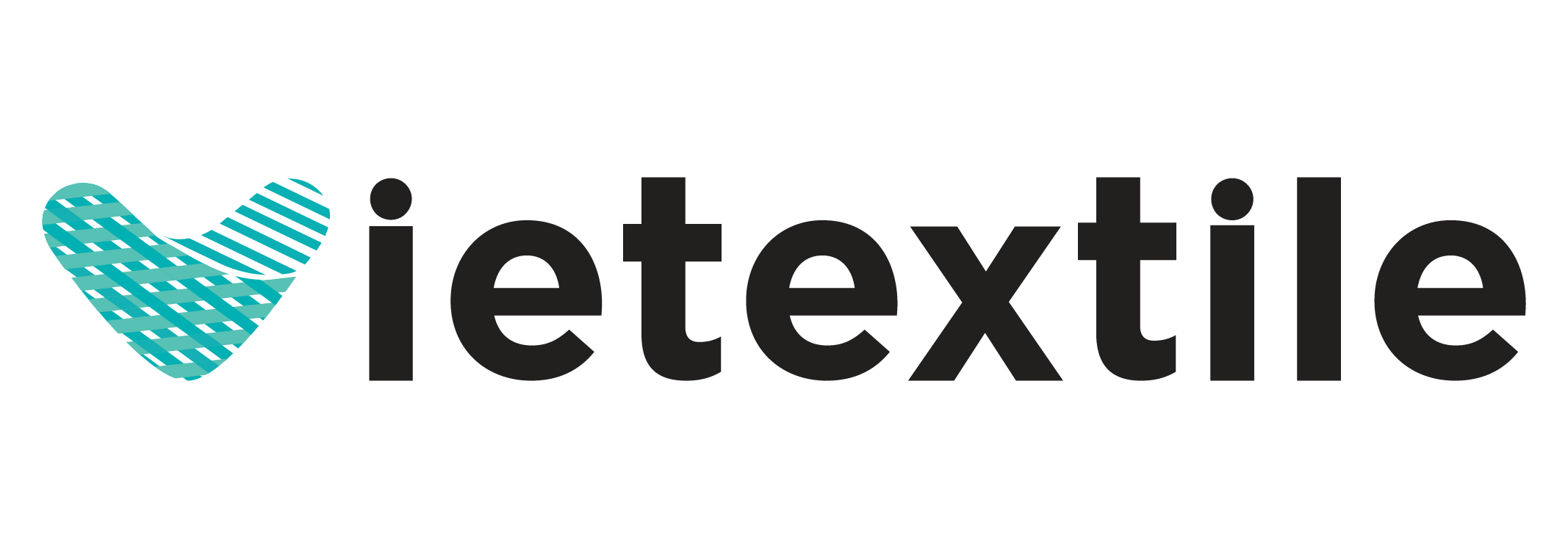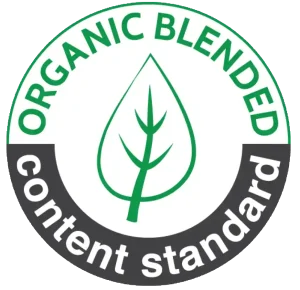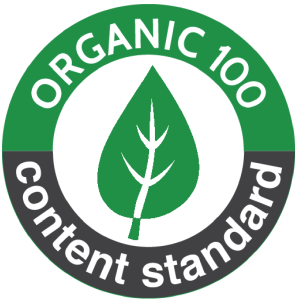
1. Fabric Printing Ink – Small Cost, Big Impact
In the printing industry’s production chain, fabric printing ink—a key term in the textile printing industry—may seem like a minor detail, but it is a silent factor that determines operating costs, colorfastness, and the quality of the final product. Especially for small and medium-sized workshops, choosing the right ink and effectively managing ink costs can help save tens of millions of dong each month.
So, what are the current prices of fabric printing inks? What types of inks are on the market? And how can you optimize printing costs without affecting print quality? This article will help you clarify each factor influencing the price, and also suggest how to choose and use ink wisely.
2. What is Fabric Printing Ink? How Many Types Are There?
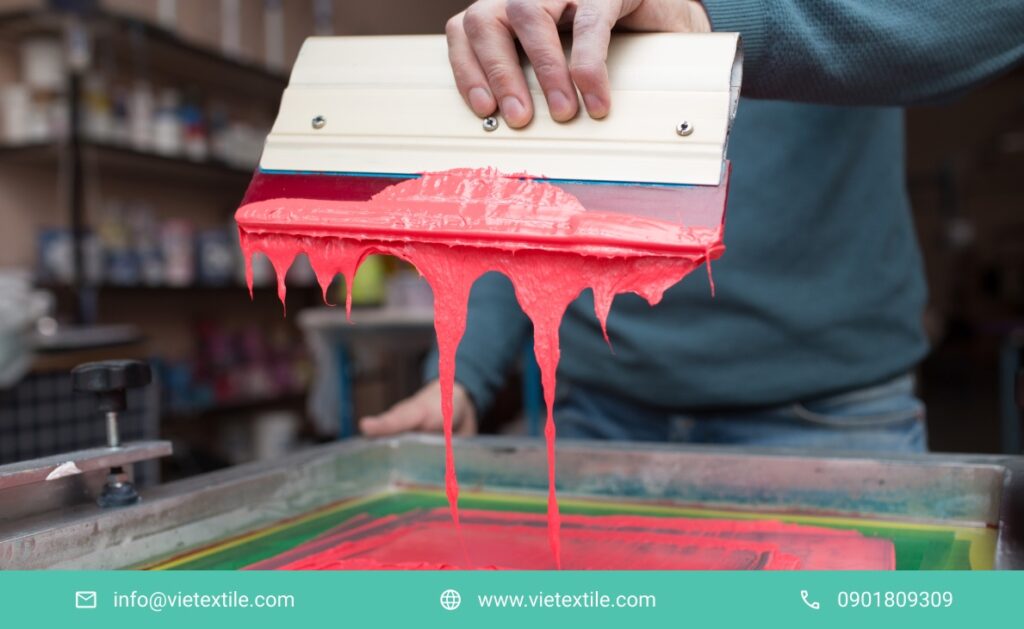
Fabric printing ink is a specialized ink used in the printing industry to create images or patterns on the surface of fabric. Depending on the technology and fabric material, there will be different ink lines suitable for each.
- Disperse Ink – Specialized for Sublimation Printing: This ink is designed specifically for polyester fabrics and works through an indirect printing mechanism. Specifically, the image is printed onto transfer paper, then heat-pressed to sublimate the ink and adhere it to the fabric fibers.
- Pros: Vibrant colors, sharp images, high adhesion, and no bleeding. Suitable for printing sportswear, flags, and banners.
- Cons: Cannot be used with cotton or other natural fabrics.
- Pigment Ink – For Direct-to-Garment (DTG) Printing on Cotton: This is a water-based ink, specialized for direct printing on cotton and cellulose-based fabrics. It does not require high-temperature or chemical post-treatment.
- Pros: Simple printing process, reasonable cost, suitable for small workshops and quick orders like T-shirts, tote bags, and fabric accessories.
- Cons: Printed colors are not as vibrant as sublimation inks, and colorfastness is lower with frequent washing.
- Reactive Ink – For High-end Natural Fabric Printing: This is a specialized ink for natural fabrics such as cotton, linen, and viscose. It requires a more complex pre- and post-printing process to activate the chemical reaction that creates the color.
- Pros: The ink penetrates deep into the fabric fibers, with excellent colorfastness after many washes. Very suitable for high-end fashion printing or tablecloths and decorative fabrics.
- Cons: The technical process is demanding, requiring a specialized steaming, washing, and drying system.
- Acid Ink – For Nylon and Silk: This ink is often used in the silk screen printing industry, swimwear, or products using nylon and polyamide.
- Pros: The printed colors are sharp, vibrant, and can penetrate deep into the fabric fibers. Provides a soft feel without a thick ink layer.
- Cons: Requires strict control of temperature and pH, and needs thorough post-printing treatment to ensure colorfastness.
3. Current Fabric Printing Ink Prices (Updated 2025)
- Disperse Ink: 350,000 – 500,000 VND/liter
- Pigment Ink: 450,000 – 700,000 VND/liter
- Reactive Ink: 500,000 – 750,000 VND/liter
- Acid Ink: 600,000 – 800,000 VND/liter
The price of ink depends on its origin (Korean, Italian, Chinese, Vietnamese), brand, concentration, bottle quality, and distribution method. Some imported inks can be 2-3 times more expensive than domestic ones, but in return, they offer high stability and are more cost-effective for large-volume printing.
4. Factors Affecting Fabric Printing Ink Prices
4.1. Printing Technology Used
Each printing technology requires a specific type of ink to ensure color adhesion, sharpness, and durability of the printed product. For example:
- Sublimation printing requires Disperse Ink to be printed on transfer paper and then heat-pressed.
- DTG printing on cotton uses Pigment or Reactive Ink.
- DTF (Direct to Film) technology uses a special ink that can print on many surfaces.
- DTG (Direct to Garment) is suitable for printing individual cotton T-shirts.
4.2. Fabric Material
Not every fabric printing ink is suitable for all types of fabric. Each fabric material requires a specialized ink to ensure good color adhesion and prevent fading. For example:
- Polyester needs Disperse Ink.
- Cotton needs Pigment or Reactive Ink.
- Nylon and silk require Acid Ink. Using the wrong ink can result in inaccurate or blurry colors, leading to mass damage.
4.3. Ink Brand and Origin
The origin and brand are also important factors. Inks imported from Italy, Japan, and Korea are often more expensive but guarantee stable quality and accurate colors. In contrast, Chinese or domestically mixed inks are cheaper but are prone to fading, printhead clogging, or inconsistent print quality.
4.4. Ink Concentration
Fabric printing ink with high concentration will produce clearer colors with a small amount, helping to save printing costs. Conversely, diluted ink requires more to achieve the desired color saturation, leading to unnecessary waste.
4.5. Usage Frequency and Workshop Scale
For large-scale or continuous printing workshops, it is better to buy ink in large batches or 20L canisters to get a better price, avoiding the higher cost of buying individual liters. Buying in bulk also helps reduce shipping costs and often comes with technical support from the supplier.
5. How to Calculate Ink Cost per Meter of Fabric
Cheaper fabric printing ink is not always more cost-effective. In fact, optimizing ink costs depends heavily on ink coverage and color saturation per meter of fabric. An ink that is more expensive but prints more, or requires less ink to achieve the same saturation, will be more cost-effective in the long run.
- For Disperse Ink, 1 liter can print from 250 to 350m², depending on the detail and coverage of the design image.
- Pigment Ink, due to different concentrations and its adherence to cotton fabric, typically prints about 180 to 250m²/liter.
This difference directly affects the production cost per meter of fabric and needs to be calculated specifically for each order.
6. How to Optimize Fabric Printing Ink Costs?
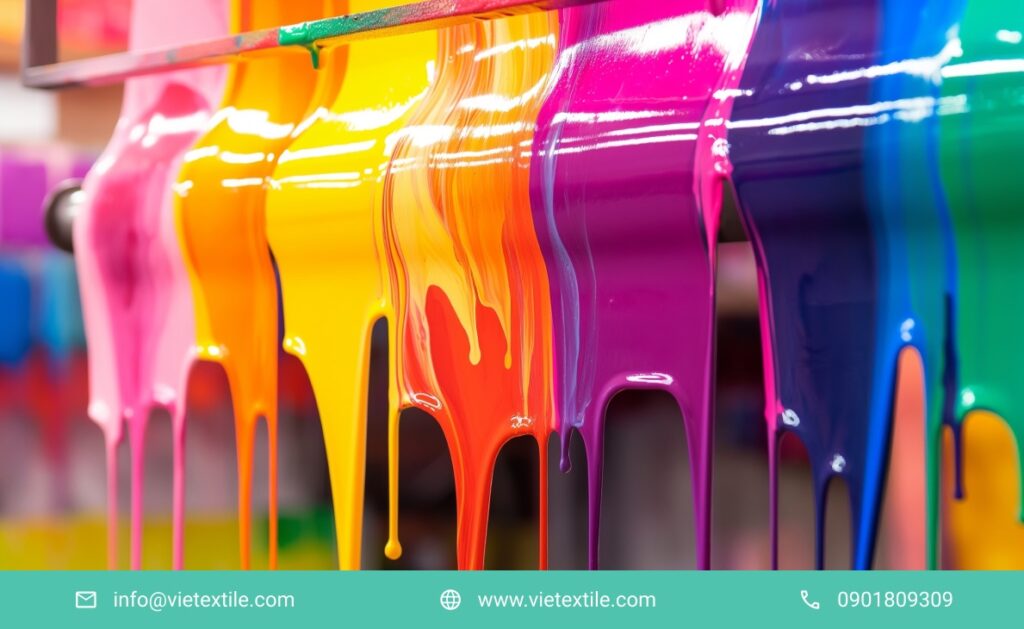
To effectively control printing costs, it is essential to understand how to use and optimize fabric printing ink. Here are some ways to maximize your ink savings while still ensuring sharp, colorfast print quality.
- Choose the right ink for your machine and material: Choosing the right ink for your printing technology and fabric type not only ensures print quality but also protects your equipment. Using the wrong ink can easily damage the printhead, and result in faded, blurry, or unevenly applied prints.
- Ensure the printer is accurately calibrated: A correctly calibrated printer will help the printhead work efficiently, using just the right amount of ink, and reducing waste. It also ensures the image is sharp and saves on long-term operating costs.
- Optimize the color profile – print correctly from the first try: Setting up a color profile suitable for each fabric type and ink will help the print achieve accuracy on the first attempt. This minimizes the need for multiple test prints, which waste ink and materials.
- Buy ink in bulk from a reputable supplier: Buying ink in large canisters or batches will be much more cost-effective than buying individual liters. Furthermore, reputable suppliers often provide technical support, warranties, or include test samples.
- Store ink correctly: After opening, ink should be stored in a dry place, away from direct sunlight and high temperatures. Always keep the ink canister tightly sealed to prevent evaporation or contamination, ensuring color stability and ink shelf life.
7. Important Notes When Buying Fabric Printing Ink
To ensure you choose a quality fabric printing ink that suits your needs, you should pay attention to these important factors:
- Choose ink compatible with the printhead and printer: Each printer model is designed to be used with a specific type of ink. Using the wrong ink will not only reduce the print quality but can also easily cause clogs and damage the printhead—which is the most important and expensive part of the machine.
- Avoid unbranded, poorly labeled inks: Inks from unreliable sources are often not quality-tested and may contain impurities that affect ink flow and color adhesion. In the long run, this can cause products to fade, colors to shift, and result in significant losses for the printing workshop.
- Test samples before buying in large quantities: Always request a test print on the exact fabric you use before placing a large order. This helps you evaluate ink smoothness, color adhesion, and compatibility with your machine, preventing situations where you buy ink that cannot be used.
- Request quality certificates and technical consultation: Especially for professional printing businesses or those printing high-end products, it is crucial to prioritize suppliers who can provide full Certificates of Origin (CO) or non-toxic certifications, along with a technical team to assist with color parameters, troubleshooting, and machine maintenance.
8. Frequently Asked Questions (FAQs)
Here are common questions about fabric printing ink that many beginners or workshop operators often encounter:
- Can Pigment Ink be printed on polyester? No. Pigment Ink typically adheres well only to cotton. Polyester requires Disperse Ink or sublimation printing.
- Is it a good idea to use Chinese fabric printing ink? It can be used if you choose a reputable brand. However, you should test it first to check color quality and durability.
- Which ink has the highest wash fastness? Reactive Ink has the highest colorfastness, especially when printed on cotton or natural fabrics.
- Should I mix my own fabric printing ink to save money? You should not, unless you have a standard color management system. Incorrect mixing ratios can damage the printhead or cause color shifts.
9. Conclusion: Good Ink – Correct Printing – Long-term Profit
The cost of fabric printing ink is one of the biggest factors affecting production efficiency. But by choosing the right ink, printing correctly, and storing it properly, you can completely optimize costs and improve print quality.
Don’t just look at the price of the ink; look at the value you create on every meter of fabric.
See more: Global Digital Fabric Printing Market Overview Report 2024
10. Contact for Fabric Printing Ink Consultation
VieTextile provides a range of genuine fabric printing inks suitable for various technologies such as sublimation printing, direct printing with pigment, reactive, and acid inks.
- Consultation on choosing the right ink for your machine, material, and budget.
- Available demos and test prints—on-site technical support.
- Commitment to genuine ink—nationwide delivery.
Contact VieTextile for a consultation today:
- Email: info@vietextile.com
- Hotline: 0901 809 309
Website: https://vietextile.com
